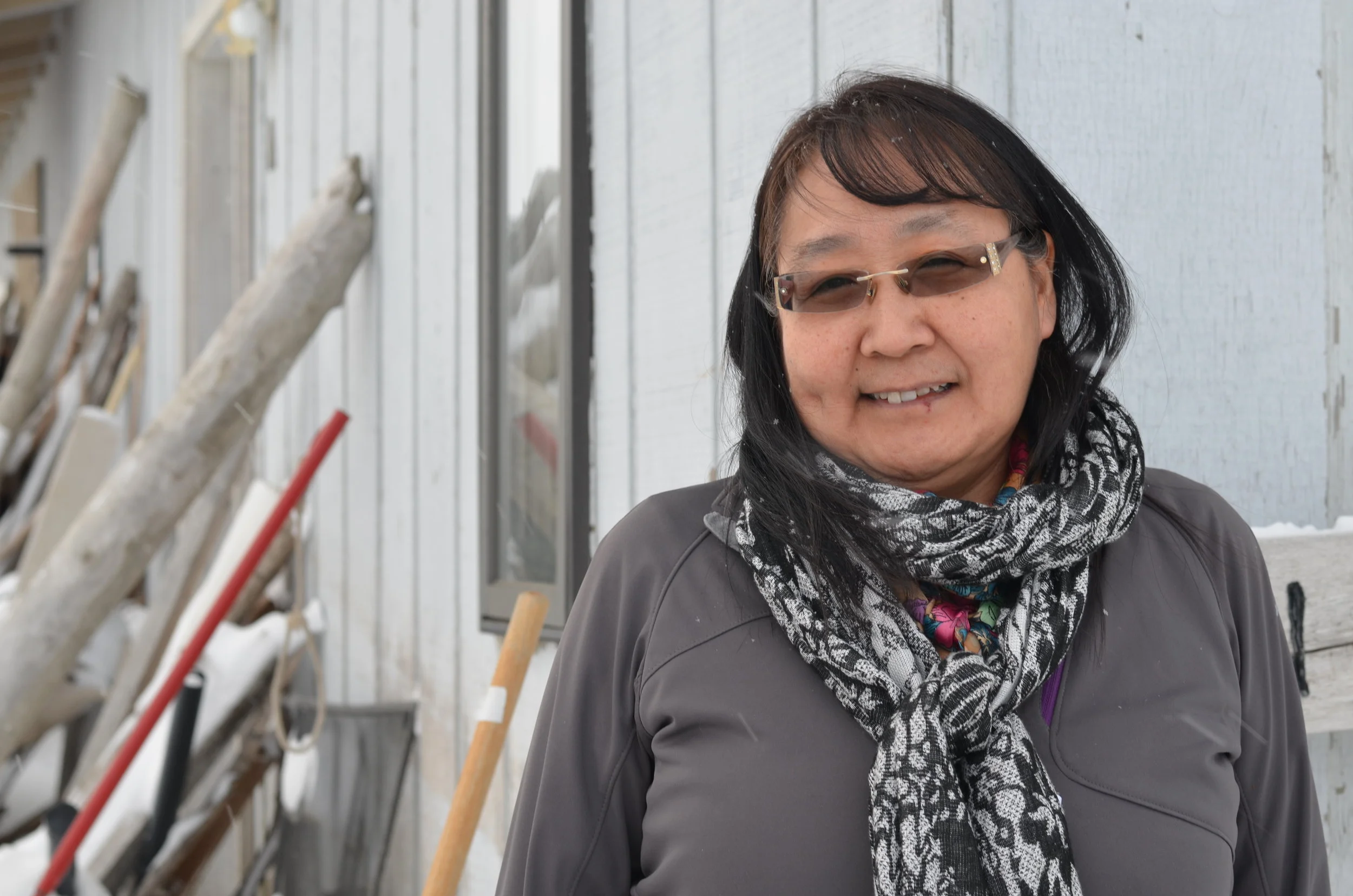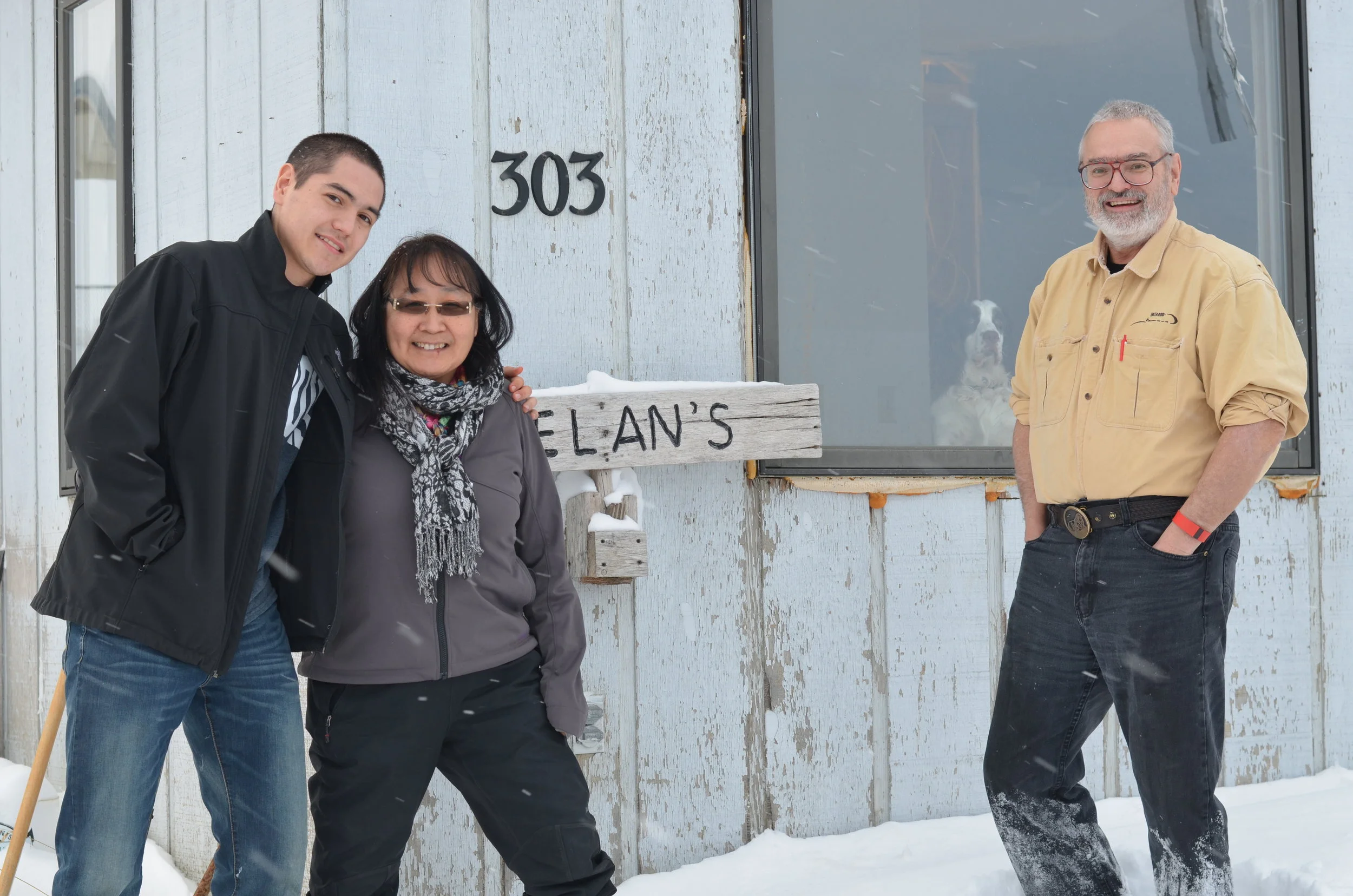Marilyn Koezuna-Irelan
King Island | Nome
Koezuna-Irelan outside her home at Belmont Point in Nome.
"[The last time I was at King Island], we went there just for a few hours, I believe it was in 2014. My mom, their aaki, made sure my kids went to King Island to see an identity of who they are. My kids have very strong memories. It was incredible and sad at the same time. But when you’re there you can tell you have to speak your first language. Not English. It’s incredible. A beautiful place."
leaving king island
My family is originally from King Island, Alaska. It's an island 93 miles northwest of Nome. It's out there in the Bering Strait, and that's where my family is originally from. And in the late 1960s, the BIA School-- the Bureau of Indian Affairs School-- was shut down by the government. And so, these families of King Island were told that they had to relocate to the mainland. And King Islanders had naturally always been along the coast traveling, and had come to Nome for part of the summers. They would just leave King Island and come to Nome as part of the summers, because they could sell their ivory carvings, their sealskin items, and then buy products like flour, sugar, rice, oatmeal-- all the dry products they needed for the winter. And so, the families were relocated here because they were closing down the schools. One of the school officials said there was a rock that was gonna fall onto the school, and that this was very dangerous because our community of King Island is on the south side of the island-- we're perching on a cliff, 45-degree angle or more. That's where our dwellings were, on the south side. And there are a lot of rocks all over the place. So then, the King Islanders were told to move to the mainland. And we did. ... I believe the last family that moved from King Island to Nome was in 1971. Some of these families, they endured hardships, because their school-age children were forcibly taken from the ship they were gonna get on to go to King Island. It was very difficult for families. The families were here [in Nome] for the summer--going fishing for salmon, picking greens, picking berries, and in anticipation of going back to King Island. And they would take this Coast Guard ship [back to the island]. They'd put everybody that was ready to go on the ship, they'd put all our umiaq boats into the ship, and take us back to King Island for the winter. And the school-age kids had to stay. And when the parents would go, the school-age kids had to be with someone like their uncles or aunts that were here [in Nome] already, or their family members. So, it's a very difficult history for us.
Being cohesive, being together
[On King Island], they were expected to know their culture rather than go to school. My mom just completed sixth grade and then she was told she had to be raised traditionally to be able to do her skin sewing, to be able to make all the food she needed for when the polar bear hunter would be her husband. When you got a polar bear, there were celebrations, and berries had to be made, and greens had to be prepared, and everything was prepared a certain way for King Islanders, in the feast and sharing with people. ... She would tell my kids she’s got a PhD in her culture! And she did-- really, truly, she did. I was expected to know what my mom knows culturally, traditionally. She taught me how to make the berries, how to put away the food, how to cut everything-- the walrus meat, ugruq-- how to take care of the skins and all the stuff she knows. I had to learn in between raising a family and being very political within my community, because we had King Island Native Community; I was their chief for several years. ... [Back on King Island], we had qasgis (the community house) or "a place of going"--clans go there to learn about each others’ hunting implements and ways of the family. When we came [to Nome], all the elders at King Island decided, "We’re all gonna be cohesive and be together. No one’s going to have a separate clan; no separate buildings; no nothing." This was their way of making sure we knew how to do our dancing and singing. ... There was a lot of polar bear songs that they had to compose. My dad was a polar bear hunter, so they would have to compose songs so they could dance them. They could dance for a twenty-four hour period when they got a polar bear. You had to. Because the women made you fancy gloves and you had to dance. If somebody composed these dances for you, you had to dance.
"...We have to do this in inupiaq"
My dad, who hunted here [in Nome] in his kayak, he would go hunting for ugruqs, so that we would eat, because there were a lot of us. When you get an ugruq, it's really huge; you could feed a lot of people. A family of nine people, and also give to elders, widows, and whoever else. So he hunted, even though he had his other job. He would get up on his days off-- 4:30, get ready, I could hear him: getting ready to go hunting. During this time frame, this marine biologist came from back east, John Burns Sr. ... He was studying marine mammals and seals. He befriended my dad, because he saw my dad went out hunting readily, you know, all the time. And so he approached my dad. They became best friends, very incredibly. But my dad had a stipulation: that John Burns had to speak our language. My dad said, "We can't do this in English. We have to do this in Inupiaq." So that’s how he learned our language. That's how my dad taught this man. So we became friends with the family and he was from the East Coast and he had himself, his wife, and they had two kids, a boy and a girl. And so that's how we were introduced into another culture in a friendly manner; that's how we were introduced to being friends.


